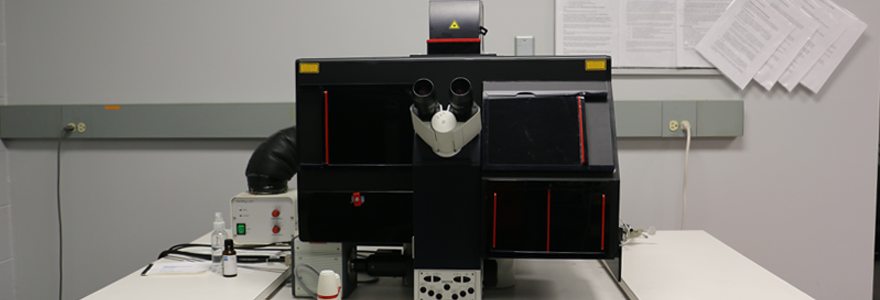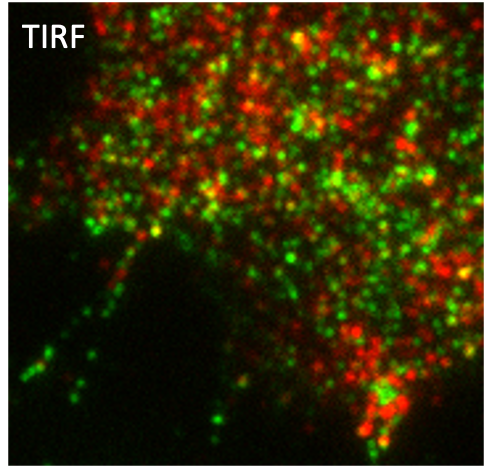Leica AM TIRF MC Microscope

The Leica AM TIRF MC system integrates four solid-state laser lines to enable fast wavelength switching and a high image recording rate with multiple fluorophores. With short switching times and extremely high image recording rate, the TIRF (Total Internal Reflection Fluorescence) is an ideal tool for live sample imaging of events at the cell surface. In addition to TIRF, the system is capable of epifluorescence and ratiometric Ca2+ imaging with Fura-2.
Leica AM TIRF MC Brochure
Key Features
- Excitation lasers include: 405, 488, 561 amd 635nm
- Hamamastu 9100-02 EMCCD camera
- Environmental chamber with temperature control
- A variety of imaging techniques available including epi-fluorescence, ratiometric Ca2+ imaging with Fura-2, brightfield and DIC as well as TIRF microscopy
-
Total Internal Reflection Fluorescence (TIRF) Microscopy
- Based on angling the excitation laser to generate an evanescent wave, which is used for excitation of fluorophores in very close proximity of the coverglass
- Excitation of fluorophores within 70-250nm of coverglass surface
- Automated laser alignment
- Fast image acquisition with EMCCD camera (30fps)
- Ideal for studying fast dynamics at or near the cell surface, such as distribution, trafficking (endocytosis, exocytosis), cytoskeleton, adhesions, cell movement, etc.
- Based on angling the excitation laser to generate an evanescent wave, which is used for excitation of fluorophores in very close proximity of the coverglass
Gallery

HEK 293 cells transfected with B2 Adrenergic Receptor and imaged using a Leica GSD (Ground State Depletion) Superresolution System. The same cell was imaged on TIRF (left image) and GSD mode (right image). Note the improvement on resolution. Images were captured by Dr. Fabiana Caetano.







